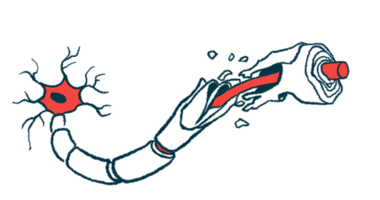Study: Chronic lower body pain in MS alters gait patterns
Slower walk, longer step durations, inconsistencies in time on one leg seen

People with multiple sclerosis (MS) who have chronic lower body pain show distinct changes in how they walk, including significantly slower gait speed, than those without pain, a study reports.
Those with chronic lower body pain also took fewer and shorter steps, had longer step durations, and had more inconsistency in how long they stood on one leg.
“These observations have implications for targeted treatment of gait impairment in persons with MS,” the researchers wrote in the study, “Comparison of Gait Parameters and Chronic Lower Body Pain in People with Multiple Sclerosis,” which was published in Multiple Sclerosis and Related Disorders.
The result of immune system attacks on the myelin sheath that protects neurons, MS can lead to a variety of symptoms, difficulty walking being one of them, which can alter gait patterns, or the specific way a person walks. There is no one way that these changes typically manifest, however, the researchers said.
Another common MS symptom is pain, with about 63% of people with MS having chronic pain that persists at least three months. This can affect the upper or lower body, and may be due to tissue damage or nervous system dysfunction.
“Chronic pain in the lower body … is frequently reported and is significantly associated with lower quality of life in the MS population,” wrote the researchers, who investigated the relationship between chronic lower body pain and gait in MS. “We hypothesized that individuals with [chronic lower body pain] would exhibit worse gait compared to [people with] MS without [chronic lower body pain].”
Assessing chronic pain and gait patterns
Forty people with MS, who were an average age of 54, completed tests of pain and gait qualities. Most (83%) were women and more than half (58%) had chronic lower body pain. The others formed a comparative group who didn’t have this type of pain, about half did have chronic pain of a different type.
The participants reported mild to moderate disability overall as measured by the Patient-Determined Disease Steps scale, a patient-reported measure of disability.
In both groups, the most common cause of pain was actual or potential damage to tissue, like muscle, joints or skin, due to activation of pain receptors, called nociceptive pain.
The participants “were instructed to walk at a comfortable, preferred, self-selected speed” and walked on a pressure-sensitive mat that helped researchers analyze gait features.
Those with chronic lower body pain reported significantly higher pain levels and were more sensitive to pressure on certain calf muscles, especially on the right side, and on both the inside and outside of the left calf. The ones with chronic lower body pain walked significantly slower and took significantly fewer steps than those without this type of pain. Also, each step spanned a significantly shorter distance and took longer to complete.
The proportion of time that participants spent supported on one leg also differed significantly between the groups, with the chronic lower body pain group spending less time in this position. This group also had more variability in time spent on one leg.
Differences in gait could come from a variety of sources, and the causal relationship between pain and gait impairment remains unclear, the researchers said. Pain could inhibit muscle function or cause fatigue that slowed walking. Abnormalities in gait could also lead to lower body pain.
“It remains to be determined whether reducing [chronic lower body pain] leads to improvements in gait or whether improving gait reduces [chronic lower body pain],” the researchers wrote. Another study limitation was that many in the comparative group had chronic pain elsewhere. This pain might also correlate with gait alterations, potentially reducing the differences between the groups.
Still, pilot data from this investigation could guide larger studies in the future, said the researchers, who noted that more research could leverage the findings “to develop targeted rehabilitation strategies that focus on chronic pain in the lower body and gait.”







